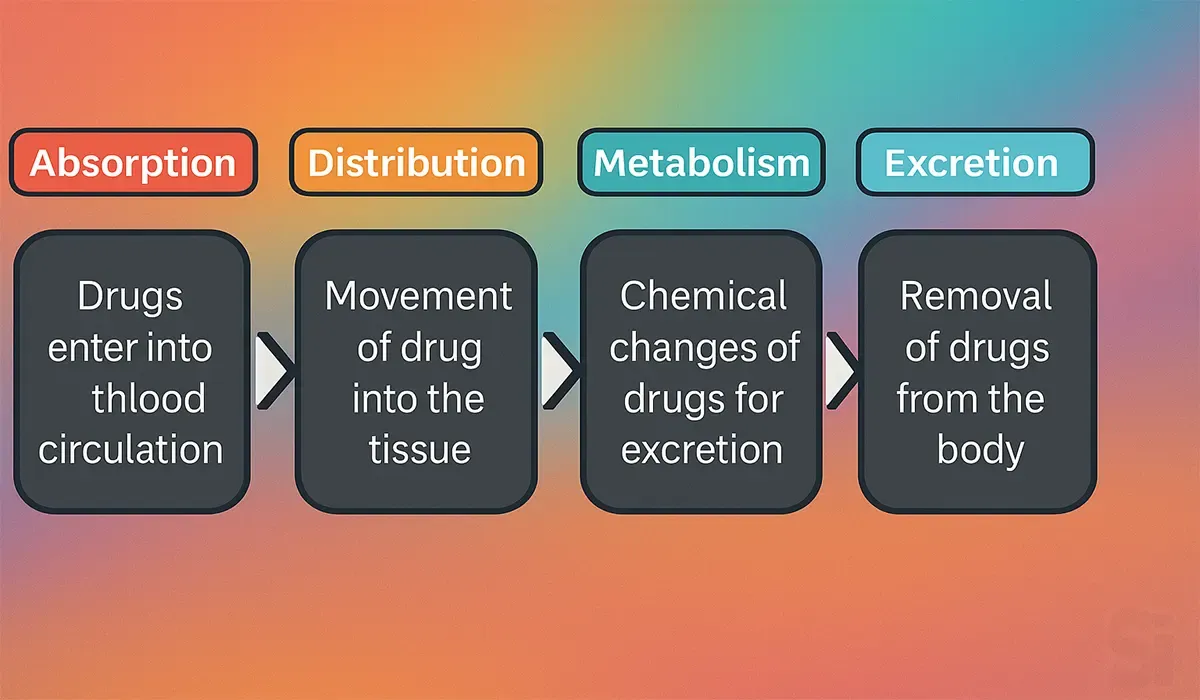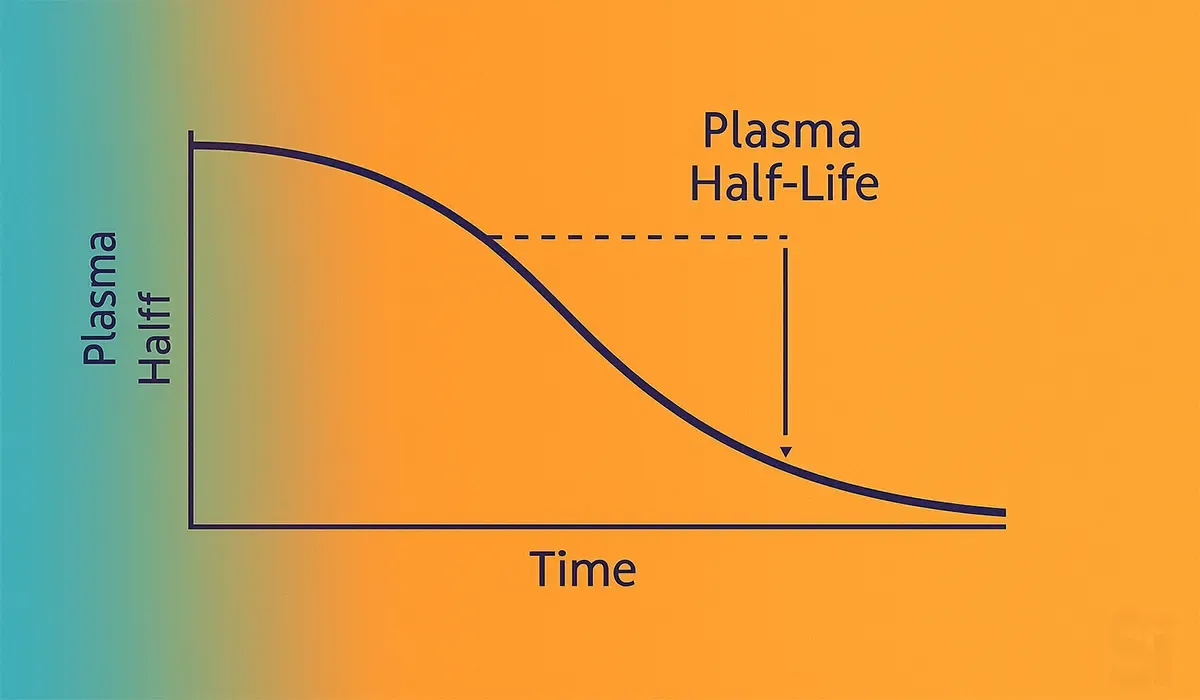Basic pharmacology for medical promotion officers | MPO training 13
Are you planning to become a Medical Promotion Officer (MPO)? This article
explains basic pharmacology in a simple way for beginners. If you are
preparing for a job in a pharma company, you will find this helpful.
The topic Basic pharmacology for medical promotion officers is explained with
real examples. It can help you understand how medicines work and what you need
to know as an MPO.
Table of contents: Basic pharmacology for medical promotion officers
Table of contents of this article-
Basic pharmacology for medical promotion officer
Basic pharmacology for medical promotion officers means learning how
different medicines work in the body. You will get to know about drug types,
how they act, and why doctors prescribe them.
This knowledge helps you present products clearly to healthcare
professionals. If you are new to this field, this article is made to guide
you step by step. It focuses on what you truly need to begin your MPO
journey.
What is pharmacology?
The word Pharmacology is derived from Greek words Pharmakon (drug) and Logos
(science). Pharmacology is a subject of medical science which deals with the study of
drugs or medicine that interact with the living system.
Pharmacology is the study of how drugs interact with the body and how the
body responds to those drugs.
What is Drug?
Drug is the API (Active Pharmaceutical Ingredient) without excipients. It
can modify physiological function or disease processes.
Example: Paracetamol.
Drugs are obtained from:
- Minerals: Liquid paraffin, magnesium sulfate etc.
- Animals: Insulin, heparin etc.
- Plants: Morphine, digoxin, atropine etc.
- Synthetic source: Aspirin, Paracetamol etc.
- Microorganisms: Penicillin, streptomycin etc.
- Genetic engineering: Human insulin, growth hormone etc.
What is Medicine?
Medicine is the finished Dosage Form (API & Excipients). It is
suitable for administration.
Example: Fast 500 mg tablet.
- API: Active Pharmaceutical Ingredients.
- Excipient: An excipient is a pharmaceutically inactive substance used in the formulation of medicine.
Medicinal Systems
1. Allopathic Medicine
System of medicine that aims to combat disease by using remedies such
as drugs or surgery.
Origin: Derived from the Greek Word Allos (opposite) and Pathos
(to suffer).
Base of The Treatment: Medication, Surgery, Radiation and other
therapies and procedures.
Practicing Area: Widely used over the world.
2. Ayurvedic Medicine
This type of medicine consists of diet, herbal medicines, exercise,
meditation, breathing, physical therapy, and other methods.
Origin: Derived from the Sanskrit words Ayur (life) and Veda
(science or knowledge).
Base of The Treatment: Complex herbal compounds, minerals, and
metal substances.
Practicing Area: Historical roots in the Indian subcontinent.
Ayurvedic medicine is heavily practiced in India and Nepal. In
Bangladesh Ayurvedic medicine is also used.
3. Unani Medicine
Arabian medicine, or Islamic medicine, a traditional system of healing
and health maintenance.
Origin: Unani means Greek.
Base of The Treatment: Various herbal, mineral and animal
sources.
Practicing Area: Perso-Arabic traditional medicine as practiced
in Muslim culture in South Asia and modern day Central Asia.
4. Herbal Medicine
Herbal medicine is made from a plant or plant part used for its scent,
flavor, or therapeutic properties. They are sold as tablets, capsules,
powders, teas, extracts, and fresh or dried plants.
Origin: From the Latin word Herba (Grass).
Base of The Treatment: Medicinal Plants.
Practicing Area: Practiced in China, Bangladesh, Africa,
America, India and Indonesia.
What is pharmacokinetics and pharmacodynamics?
1. Pharmacokinetics
Study of the Absorption, Distribution, Metabolism and Excretion
(ADME) of drugs ("i.e. what the body does to the drug")
2. Pharmacodynamics
It is a branch of Pharmacology which deals with the effects of Drug
& Mechanism of action. (i.e. "what the drug does to the body").
Pharmacodynamics involves:
- Receptor binding.
- Post receptor effect.
- Chemical reaction.
Receptor Binding : Receptors are macromolecules involved in
chemical signaling between and within cells. They are located on the
cell surface membrane or within the cytoplasm and are composed of
proteins.
Receptor binding refers to the interaction between a drug and its
specific receptor site on a cell. This binding activates or blocks
the receptor, initiating a biological response depending on whether
the drug is an agonist or antagonist.
Post-Receptor Effect : Post-receptor effect describes the
series of cellular processes that occur after a drug binds to its
receptor. These effects often involve signal transduction pathways
that amplify the drug's action and produce the intended therapeutic
outcome.
Chemical Reaction : Chemical reactions in pharmacodynamics
involve the biochemical interactions triggered by a drug, which may
include enzyme inhibition, alteration of pH, or redox changes. These
reactions contribute to the drug’s pharmacological effects in the
body.
Drug Effects
Therapeutic or Desired Action: Desired effect of a drug for
treating a disease. Example: Fast (Paracetamol) is used to relieve
pain & fever.
Side Effect: Unwanted, predictable pharmacological effects
that occur within therapeutic ranges. Side effects can be both
therapeutic and harmful. Example: Nausea, vomiting, diarrhea etc.
Adverse Effect: Unwanted, unpredictable pharmacological
effects that occur within therapeutic ranges. It is generally
harmful & undesirable. Example: Disability, heart attack,
death etc.
Hypersensitivity or Allergic Reactions: Extreme physical
sensitivity to any drug. Example: Skin rash, Itching, wheezing or
other breathing problems, Swelling, anaphylaxis etc.
Teratogenic Effect: Harmful effects on the fetus leading to
developmental defects. Example: Tetracyclines taken in pregnancy
may affect a baby's bone growth.
Drug-Food Interaction: A drug-food interaction occurs when
food and medicine interfere with one another. Example: Dairy
products can interfere with certain antibiotics such as
tetracycline, doxycycline, and ciprofloxacin.
Drug-Drug Interaction: Drug interaction occurs when one
drug alters the pharmacological effect of another drug. Example:
Absorption of tetracycline is impaired by antacid containing
aluminium, calcium or magnesium and iron containing preparation.
Synergism: When the combined effect of two or more drugs is
greater than the sum of individual effects is called drug
synergism/synergistic effect. Example: Beta blocker + Diuretic =
increased BP lowering effect.
Agonist: A drug that stimulates the regular action of a
receptor. Example: Salbutamol is a ẞ₂- adrenoceptor agonist that
helps in bronchodilation.
Antagonist: A drug that opposes the regular action of a
receptor. Example: Atenolol (Tenoloc) is ẞ₁- adrenoceptor
antagonist that helps in lowering blood pressure.
Potency: The amount of a drug to produce the desired effect
is called potency.
Efficacy: The effect produced by a drug is called efficacy.
Affinity: Affinity is the tendency of drugs to bind with a
receptor.
Pharmacological Terminology
Dose: The amount of medicine administered at a time.
Example: Paracetamol 500 mg.
Dosage: The amount and rate of administration of a drug.
Example: 500 mg three times daily.
Dosage Form: It is the physical characteristics of a drug
product. Example: Tablet: Solid dosage form.
- Cream, Ointment: Semi solid dosage form.
- Syrup: Liquid dosage form.
Indication: The reason or purpose for giving a medication.
Contraindication: Reasons against giving a particular drug.
Administration: This is the process of giving a medication
to a patient for the treatment
Therapeutic Dose: Dose required to get the optimum
therapeutic effect.
Adjuvant Therapy/Adjunct Therapy: Any treatment given in
addition to the main treatment.
Loading Dose: An initial higher dose of a drug that may be
given at the beginning of a course of treatment to get immediate
desired therapeutic effect. Example: Loading dose of Clopidogrel
75 mg (Dclot 75 mg) for Acute Coronary patient is 300 mg (4
tablet) orally.
Maintenance Dose: Small, fixed & regular dose for long
term treatment. Example: Clopidogrel 75 mg (Dclot 75 mg) once
daily is a maintenance dose after completing Loading Dose.
Tapering Dose: Gradual reduction of a dose for withdrawal
purpose.
Bioavailability: Amount of active drug reaching the
systemic circulation after administration through any route. In IV
route bioavailability is 100% in the body.
Maximum/Peak Plasma Concentration (Cmax): The highest
concentration of a drug achieved in the blood after
administration.
Plasma half-life or Elimination half-life (t/½): Time
required for the peak plasma concentration of a drug to decline by
50%. It is denoted by 't½'.
Rx: "R" stands for the Latin word "recipe", meaning "you
take".
MIC: Minimum Inhibitory Concentration, the lowest
concentration of an antibiotic required to inhibit the growth of
an pathogen. Example: MIC Value of ceftriaxone is 0.02-0.2 µg/ml
in blood.
First Pass Metabolism: When a drug is taken by mouth after
absorption it passes through the liver then it reaches
circulation. Liver can metabolize the drug while passing. This
effect is known as first pass metabolism.
OTC Drug: Over-the-counter (OTC) drugs are medicines sold
directly to a consumer without a prescription. Example:
Paracetamol, omeprazole, Naproxen etc.
Brand Name: Individual Name of the company. Name given by a
manufacturer. Example: Fast Tablet (Acme).
Generic Name: The chemical name of a drug. Example:
Paracetamol.
Bioequivalent: When the pharmacokinetic profile and
clinical efficacy of a brand A is equivalent to
originator/research brand then it is called bioequivalent to
originator/research brand. Example: Fix-A (Acme) is bioequivalent
to originator brand Suprax (Lupin Pharmaceuticals, USA).
Routes of Drug Administration
1. Oral: Tablet, Capsule, Syrup.
2. Parenteral: Injection
- Intravenous (IV)
- Intramuscular (IM)
- Subcutaneous (SC)
3. Respiratory/Inhalation: Inhaler.
4. Topical: Cream, Ointment. Lotion, gel
5. Rectal: Suppository.
6. Ophthalmic: Eye Drop.
7. Sublingual: Lozenge.
Pregnancy Category of Drug
| Category | Description |
|---|---|
| A | The safest drug in Pregnancy |
| B | Less safe than category A |
| C | No surety of safety |
| D | Risky but can be used in emergency |
| X | Never use in Pregnancy |
| N | FDA has not yet classified the drug into a specified pregnancy category |
Drug Regulatory Authority
BP: British Pharmacopoeia.
USP: United States Pharmacopeia.
INN: international nonproprietary names.
US FDA: United State Food and Drug Administration.
UK MHRA: United Kingdom Medicines and Healthcare
products Regulatory Agency.
TGA: Therapeutic Goods Administration-Australia.
EU-Public Health: European Union Public Health.
DGDA: Directorate General Of Drug Administration.
Prescription pad sample
FAQs
1. What are the two main branches of pharmacology?
The two main branches are pharmacokinetics (what the body does
to the drug) and pharmacodynamics (what the drug does to the
body).
2. What is the difference between a generic name and a
brand name of a drug?
A generic name is the scientific name of a drug, while the
brand name is the name given by a company that markets it.
3. What are side effects in pharmacology?
Side effects are unwanted or unexpected effects that can
happen when taking a drug along with its main benefits.
4. What does the term 'mechanism of action' mean?
It refers to how a drug works in the body at the cellular or
molecular level to produce its effect.
5. What is the meaning of drug dosage?
Drug dosage is the amount of a drug that should be taken at
one time or over a certain period to get the desired effect.
6. How do drugs enter the body?
Drugs can enter the body through various routes like oral (by
mouth), injection, inhalation, or through the skin.
7. What is drug interaction?
A drug interaction happens when one drug affects how another
drug works, either by increasing or decreasing its effects.
Conclusion
To succeed as a Medical Promotion Officer (MPO), you must
understand the basics of pharmacology. This article on “Basic
pharmacology for medical promotion officer” gives you the
starting knowledge to grow in your career. You now have a
better idea about drugs, their use, and how they help
patients. If you are serious about working in a pharma
company, this is your first learning step. Stay focused, and
your future as an MPO will be bright.









